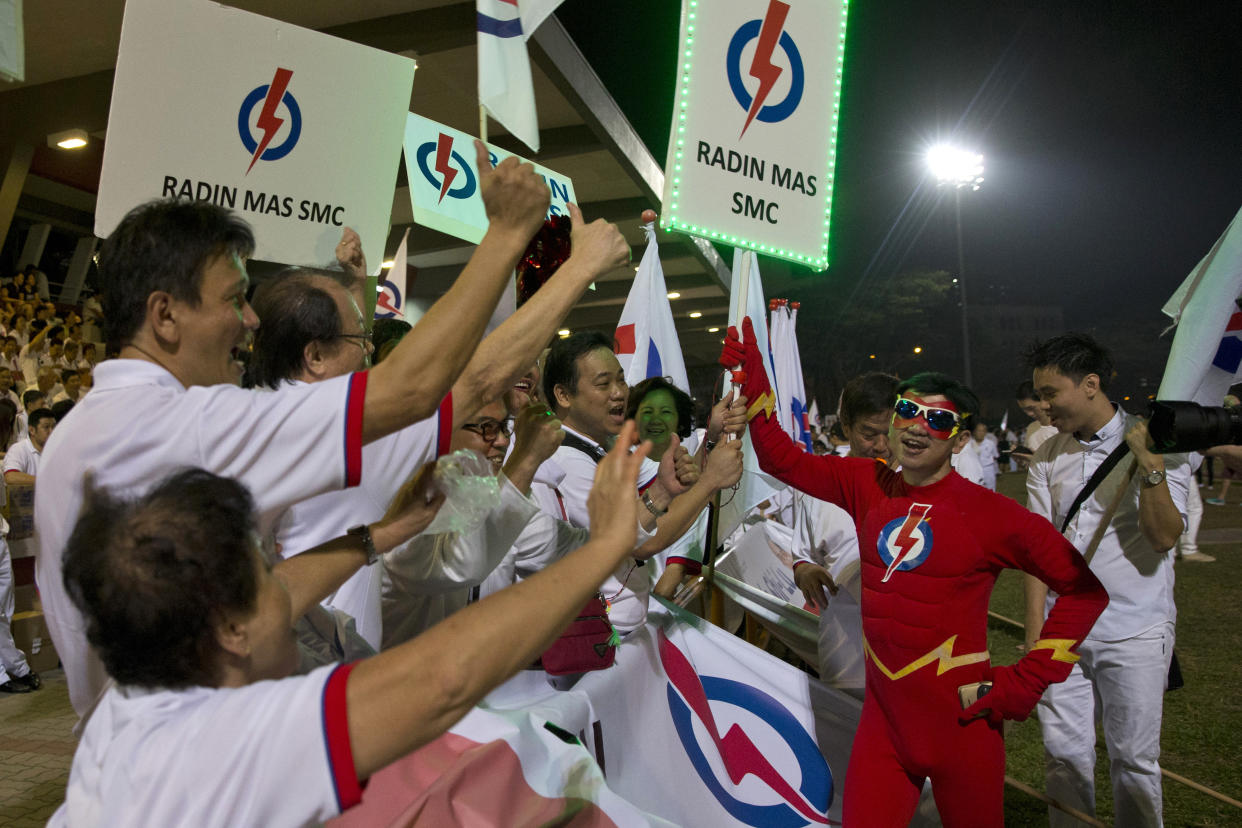Electoral Boundaries Review Committee releases report, election imminent

SINGAPORE — In a sign that a general election (GE) is about to be called, the Electoral Boundaries Review Committee (EBRC) has released its report on the electoral boundaries in Singapore.
In the report released on Friday (13 March), the EBRC recommended that Singapore increase the number of Members of Parliament from 89 to 93, and scrap 6-member Group Representation Constituencies (GRCs).
In addition, there will be 14 Single-Member Constituencies (SMCs) and 17 GRCs, up from the current 13 SMCs and 16 GRCs.
#ICYMI: What's new in #GE2020 election boundaries. READ: https://t.co/EAeCjN0YBu pic.twitter.com/fMDoZQdlm6
— Yahoo Singapore (@YahooSG) June 29, 2020
GRCs
There will be 11 five-member GRCs, three more than in 2015, while the number of four-member GRCs stays unchanged at six.
The former Sengkang West and Punggol East SMCs, as well as parts of Pasir-Ris Punggol GRC, will be merged to form a new four-member Sengkang GRC.
Bishan-Toa Payoh GRC will become a four-member GRC, down from five members.
East Coast GRC and West Coast GRC will have five members each, up from four members. Fengshan will be subsumed into East Coast GRC.
The six-member Ang Mo Kio and Pasir Ris-Punggol GRCs will be reduced to five-member GRCs.
The Workers’ Party-held Aljunied GRC remains unchanged at five members.
Four new SMCs
Punggol West, currently led by Senior Parliamentary Secretary Sun Xueling, will be carved out of Pasir Ris-Punggol GRC.
Yio Chu Kang, once part of Ang Mo Kio GRC, and Kebun Baru, which was part of Nee Soon GRC, are back.
Marymount has been carved out of Bishan-Toa Payoh GRC.
Ongoing pandemic
The news comes amid the ongoing coronavirus pandemic, which has seen 187 confirmed cases of COVID-19 infection in Singapore as of Thursday. There are now more than 130,000 cases of COVID-19 infection in 127 countries and territories, and almost 5,000 deaths, according to the latest coronavirus data.
The government has unveiled a slew of healthcare and travel measures in the past two months to curb the spread of the coronavirus.
In addition, the government unveiled a $4 billion Support and Stabilisation Package, announced by Finance Minister and Deputy Prime Minister Heng Swee Keat in his Budget speech last month, to help businesses, workers and households. It is working on a second package of measures, Heng and Prime Minister (PM) Lee Hsien Loong have said.
On Thursday, authorities announced that the number of polling districts in seven GRCs has been adjusted.
In September, Lee convened the EBRC and directed it to review the boundaries of the current electoral divisions and to recommend the number and boundaries of GRCs and Single Member Constituencies (SMCs). This took into consideration significant changes in the number of electors in the current electoral divisions as a result of population shifts and housing developments.
It also looked into further reducing the average size of the GRCs and to increase the number of SMCs from the current 13. Out of the 16 GRCs, two have six MPs, eight have five MPs and six have four MPs.
The EBRC was chaired by the principal private secretary to the prime minister.
What happens next?
With the release of the report, Parliament will be dissolved by the President upon the advice of the PM. She will then direct the Returning Officer to issue a Writ of Election.
The shortest period between the report’s release and the dissolution of Parliament was one day, which occurred ahead of the 2001 GE while the longest was one month and 26 days during the 2011 GE. Meanwhile, the usual timeframe between the dissolution of Parliament and Nomination Day - which marks the start of the campaign period – is about one week.
Under Singapore law, the minimum number of days for electoral campaigning is nine, after which the country goes to the polls.
For the last general election, the EBRC’s report was submitted to the prime minister on 21 July 2015. Parliament was then dissolved on 25 August that year, with the election held on 11 September.
In 2011, the EBRC report was handed in on 21 February after which Parliament was dissolved on 19 April and the election held on 7 May.
The next general election must be held by 15 April 2021.
The list of SMCs and GRCs in the EBRC report
SMCs
(1) Bukit Batok
(2) Bukit Panjang
(3) Hong Kah North
(4) Hougang
(5) Kebun Baru
(6) MacPherson
(7) Marymount
(8) Mountbatten
(9) Pioneer
(10) Potong Pasir
(11) Punggol West
(12) Radin Mas
(13) Yio Chu Kang
(14) Yuhua
4-MP GRCs
(1) Bishan-Toa Payoh
(2) Chua Chu Kang
(3) Holland-Bukit Timah
(4) Jalan Besar
(5) Marsiling-Yew Tee
(6) Sengkang
5-MP GRCs
(1) Aljunied
(2) Ang Mo Kio
(3) East Coast
(4) Jurong
(5) Marine Parade
(6) Nee Soon
(7) Pasir Ris-Punggol
(8) Sembawang
(9) Tampines
(10) Tanjong Pagar
(11) West Coast
Stay in the know on-the-go: Join Yahoo Singapore's Telegram channel at http://t.me/YahooSingapore
Related stories
COVID-19: Singapore imposes new border restrictions on Italy, Spain, France and Germany



